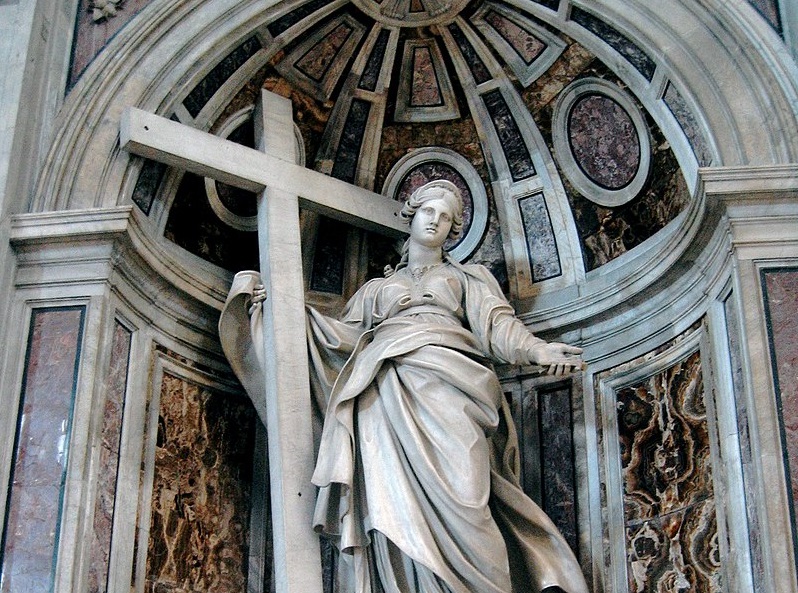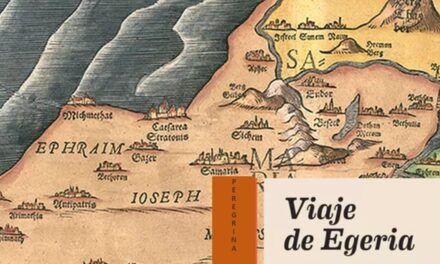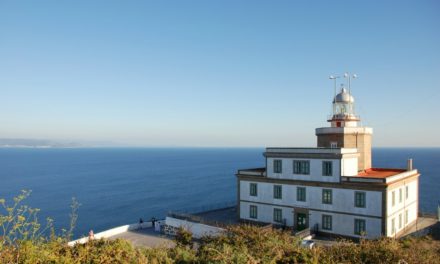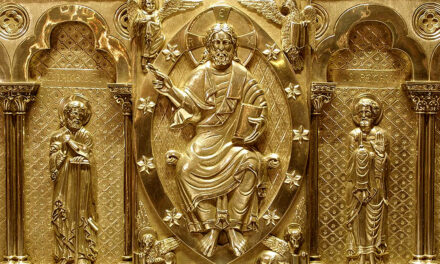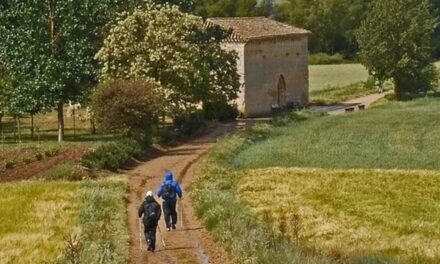History has too often been written by and about men. For centuries, authors of all kinds and conditions have told us about intrepid adventurers, travellers and navigators, but completely leaving women like Egeria or Santa Elena, pilgrims and travellers of the fourth century, in the shadows. We at the Jacobean Foundation would like to bring to light the figure of many pilgrims, including some pilgrims who featured in some of the oldest and most legendary travel stories in the West.
Santa Elena gave rise to one of the most famous legends of Christianity and to an enormous hagiographic literature, however, there is hardly any reliable historical or biographical data that has been left behind. We know that Flavia Iulia Helena was born around the year 248, but her birthplace is not clear as some sources speak of Drepano, a city on the Gulf of Nicomedia renamed Heliopolis after her own son, while others lean towards Roman Britain, a hypothesis that gave rise to the beautiful novel Elena by Evelyn Waugh.
The historical data are more numerous concerning her marriage to Tetrarch Constantius Chlorus, whom she met in Asia Minor when he was just a military tribune. In 293 her husband was named governor of Gaul by Diocletian, which led him to repudiate her for not being of Roman origin. For years Elena remained in the shadows watching how her former husband married Teodora, Maximinano Erculeo’s stepdaughter with whom she had three children. However, against all odds, Elena recovered all the historical prominence that was due to her when Chlorus chose as his successor the only son he had had with her: Constantine.
Constantine became emperor in 306 and showed his love and respect for his mother by calling her to court, giving her the title of Augusta, allowing her free disposal of the imperial treasury, and even having coins minted with her name and image. Such was the importance of the new empress in the life of her son, that many have believed her to be responsible for her son’s conversion to Christianity. The truth is that Elena was a Christian from her youth -according to some sources Luciano de Antioquia would have converted her- which allows us to assume that she would have transmitted Christian values to her son.
The legend woven around Helen and Constantine continues in 312, when the emperor was fighting in Italy against Maxentius and had a vision that heralded his victory. This event has been seen as the reason for his transfer, along with her mother, to the city of Rome, as well as the famous Edict of Milan with which the following year he legalized Christianity.
Since her arrival in the imperial city Elena dedicated herself to a pious life, she was received by the pope and had the Basilica of the Holy Cross built. The story could have ended there, but when Constantine conquered the East in 324, Elena, practically an old woman, decided to follow in her son’s footsteps by travelling to Asia Minor and from there to Palestine. From this moment her life took a huge turn and turned her into the mythical traveller that we all know or, rather, a pilgrim, as that is what we should call her if we accept that her voyage to Palestine was motivated by her wish to visit the Holy Places and the search for the Holy Relics.
Historically, reality must have been more complex than legend, since it must be remembered that since the origin of pilgrimages, religious motivation coexisted with other more mundane ones: from social prestige, or in the case of Rome, to a career in the clergy, and from the adventure of the initial journeys to Santiago or to Jerusalem. To these motivations, which were very common among the nobility, we must also add the fact that since Hadrian’s time visiting all the provinces of the Empire was common among the emperors and their closest circle. In any case, whether or not it was the true reason for her journey, the search for the cross of Christ has turned Elena’s story into a legend.
The empress arrived in Jerusalem around the year 327 and there she began to work unceasingly to promote the construction of basilicas and temples in the main Holy Places: the basilica of the Nativity on the ground of the Bethlehem grotto, the Ascension on the Mount of Olives and the temple of the Anastasis or Resurrection over the Holy Sepulchre.
Shortly after her arrival, Elena found the relics of Christ’s crucifixion, giving rise to the famous “Invention of the True Cross”. This event appears in some texts dating from the end of the 4th century, such as Saint Ambrose’s speech for the funeral of Emperor Theodosius the Great, a work from 395 in which the author recounts how the Saint found the three crosses on Golgotha and other instruments of the Passion in a cistern, recognizing them thanks to a trilingual inscription.
In subsequent centuries, the legend of the Holy Cross expanded, being enlarged with fabulous events, especially those related to the identification of the “vera” or “true” cross of Christ. A widely publicized miracle was attributed to Bishop Macario for having brought the three recently discovered crosses to the house of a dying woman. When he brought the cross of one of the thieves closer to her, nothing happened. With that of the second thief everything remained the same. But, finally, when he brought Christ’s cross closer to her, the woman suddenly opened her eyes and got to her feet. In other versions, the sick woman becomes a dead man who is resurrected and, in the famous Golden Legend, the identification is due to a Jew named Judas since “if a Judas had delivered Christ, it was up to another Judas to repair the damage by restoring the Redeemer’s Cross.
Elena died in Thrace in 329. She was approximately eighty years old and only two years had elapsed after the “Invention of the True Cross”. Her body was transferred to Rome and buried in a splendid circular mausoleum on the Via Lebicana. According to the chronicles, the saint was the object of veneration since her death and, in subsequent centuries, many of the pilgrims who visited the basilicas and tombs of martyrs in Rome also came to visit her tomb. However, the traffic in relics so common in the Middle Ages did not respect the empress and, according to Nicefalo Callisto, her body was taken to Constantinople to return only centuries later to the West: to Venice or, according to other sources, to some place in France. Be that as it may, only ruins now remain of the Lebicana mausoleum, although in the Vatican Museum one can still see the porphyry sarcophagus that contained her body.

